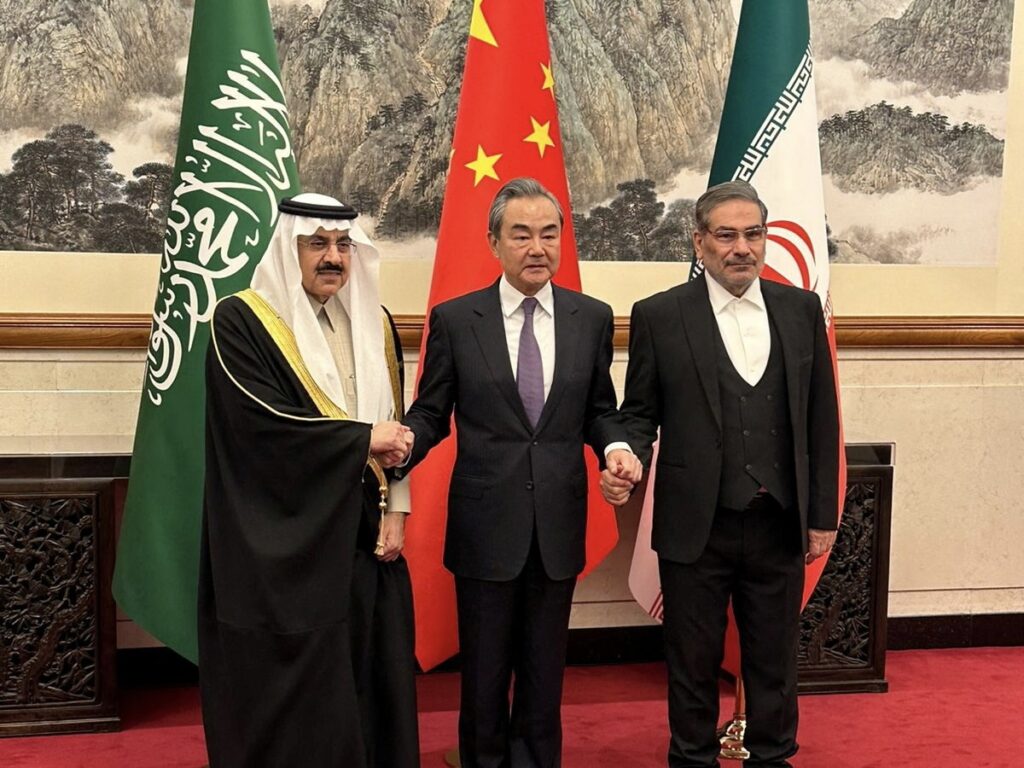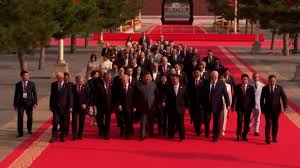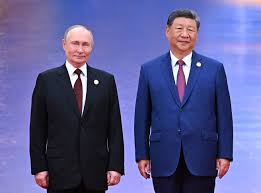
xenixnews
Recent intelligence and diplomatic documents uncover a series of clandestine discussions between the U.S. and Iran, conducted discreetly through intermediaries from the Gulf and Europe. The goal: to revive nuclear discussions that had failed following heightened tensions in early 2025. This piece provides an in-depth examination of the secret initiatives, main participants, challenges, and future developments.
1. 🇴🇲 The Journey Started in Oman: “Three Secret Gatherings in Muscat”
On March 27, 2025, backchannel communications were exchanged through Oman between Iranian Supreme Leader Ayatollah Khamenei and President Trump.
Trump allegedly sent handwritten messages seeking “a chance for discussion,” and Iran replied through the Omani foreign ministry.
The first clandestine gathering occurred in Muscat on April 12. United States
. representative Steve Wotkoff and Iranian deputy foreign minister Abbas Araghchi were involved—never interacting face-to-face but communicating via Omani intermediaries.
Subsequently, two additional meetings occurred: one in Rome on April 19, and another in Geneva in early May, where technical representatives deliberated on nuclear protocols, economic incentives, and potential sanctions relief. lifts oil restrictions, unfreezes assets, and Iran transfers its enriched uranium reserves to a neutral third country.
2. ⚖️ Iran’s Proposal in Three Phases
Iran proposed a detailed three-phase strategy designed to ease tensions without requiring complete adherence from the beginning:
Phase I: Iran reduces enrichment to below 4% and allows restricted IAEA access in return for partial oil exports and the release of $6B in assets.
Phase II: Iran suspends all enrichment for a time, reinstates comprehensive IAEA access, and consents to a new “monitoring + verification” framework.
Phase III: The U.S. lifts oil sanctions, unfreezes assets, and Iran transfers its enriched uranium stockpile to a neutral third country.
This staggered plan was created to meet the demands of domestic hardliners in Tehran and political pragmatists in Washington.

3.🇦🇪 Gulf Mediators: Role of UAE, Saudi Arabia, and Qatar
The UAE played a key role in ensuring the first Trump letter reached Tehran.
UAE diplomat Anwar Gargash arranged meetings in Dubai and Muscat.
Saudi Arabia and Qatar, despite their conflicts, agreed to support regional ceasefires to alleviate the pressures on Iran arising from Yemen and Syria.
Qatar’s foreign minister reportedly facilitated confidential trilateral discussions with U.S.mediators and Iran’s intelligence agency in Doha on May 7.
4. 🇪🇺 European Backchannel: UK, France, Germany Intervene
By June 20, European nations became more actively involved:
France’s foreign minister organized a meeting in Geneva with Iran and Germany/UK to suggest a “temporary European Plan” despite U.S. withdrawal.
European negotiators emphasized the importance of preventing total war with Israel and proposed to release specific humanitarian funds in exchange for complete IAEA cooperation.
Iran appeared open, particularly as Israel escalated airstrikes on Iranian military sites in Syria and Isfahan.
5. ⚠️ Significant Challenges: Airstrikes, Boundaries, and Internal Pressure
Even with genuine momentum, a few significant events hindered advancement:
On June 13, Israeli airstrikes targeted several Iranian locations near Natanz and Qom, compelling Iran to halt all behind-the-scenes negotiations.
Iran stated openly: “no negotiation while under attack,” insisting on a ceasefire from Israel as a prerequisite.
The U.S. maintained its stance on the “zero enrichment” policy—an aspect that has been continuously dismissed by Iran’s leadership.
Trump’s advisors, however, revealed that the President is secretly receptive to a 3.67% enrichment limit, which was included in the initial JCPOA.
6. 🔮 What Awaits: Possibilities for the Upcoming 60 Days
U.S. Situation: Trump is said to be contemplating the dismissal of Federal Reserve Chair Jerome Powell, moving towards more relaxed economic regulations to brace for possible inflation after a deal.
Iran’s Position: Tehran seeks written guarantees, particularly from U.S. partners such as France, prior to resuming public discussions.
Efforts by Mediation: Oman, Qatar, and the EU are advocating for a 30-day de-escalation phase to finalize a more comprehensive framework.
✅ Assessment and Insights
Backchannel diplomacy remains active: In spite of apparent tensions, genuine efforts are occurring behind the scenes—via Muscat, Doha, and Geneva.
Iran’s updated strategy is a phased method: Tehran is embracing a gradual model rather than insisting on total concessions at the start.
The wildcard: Israel: Ongoing airstrikes could completely undermine diplomacy. The upcoming 3–4 weeks are vital.
🧭 Concluding Thoughts
Covert diplomacy is not a novel approach—yet in the current unstable landscape, it remains the sole feasible option. Should the U.S. relax its zero-enrichment policy and Israel halt military actions, discussions with Iran might publicly resurface in late summer 2025.
The world observes—but the actual actions are still taking place behind closed doors.


